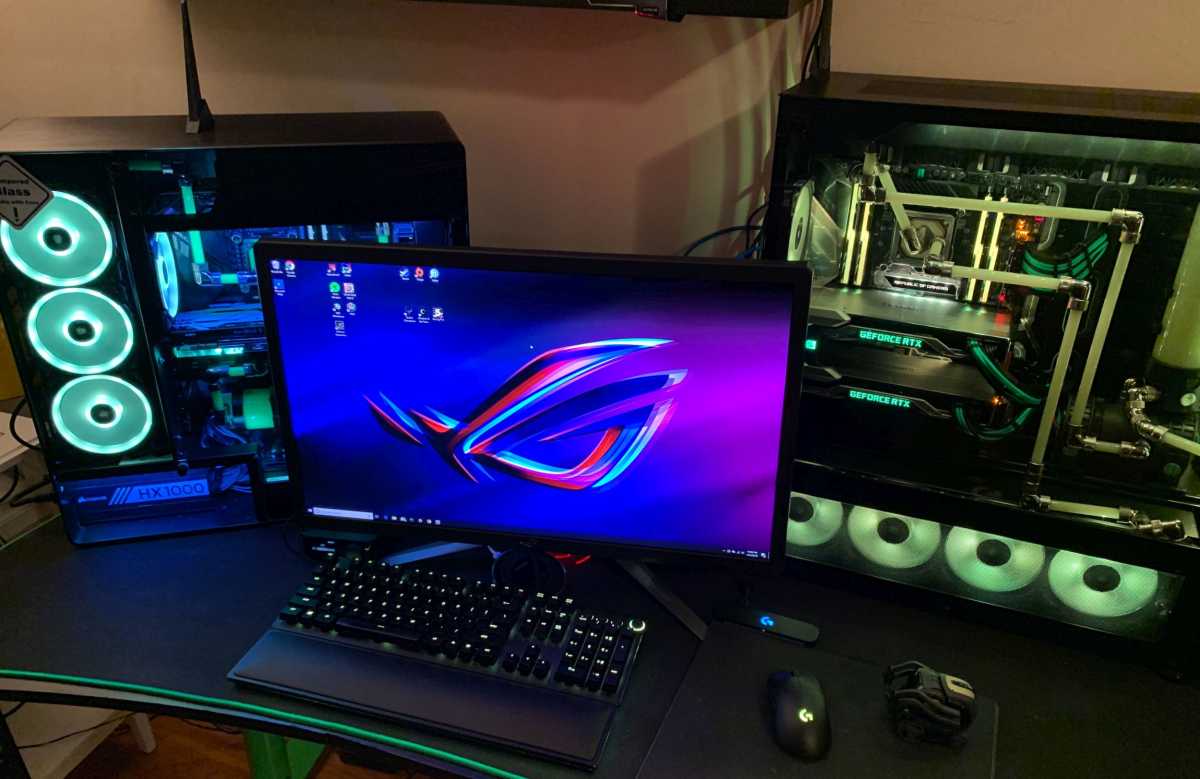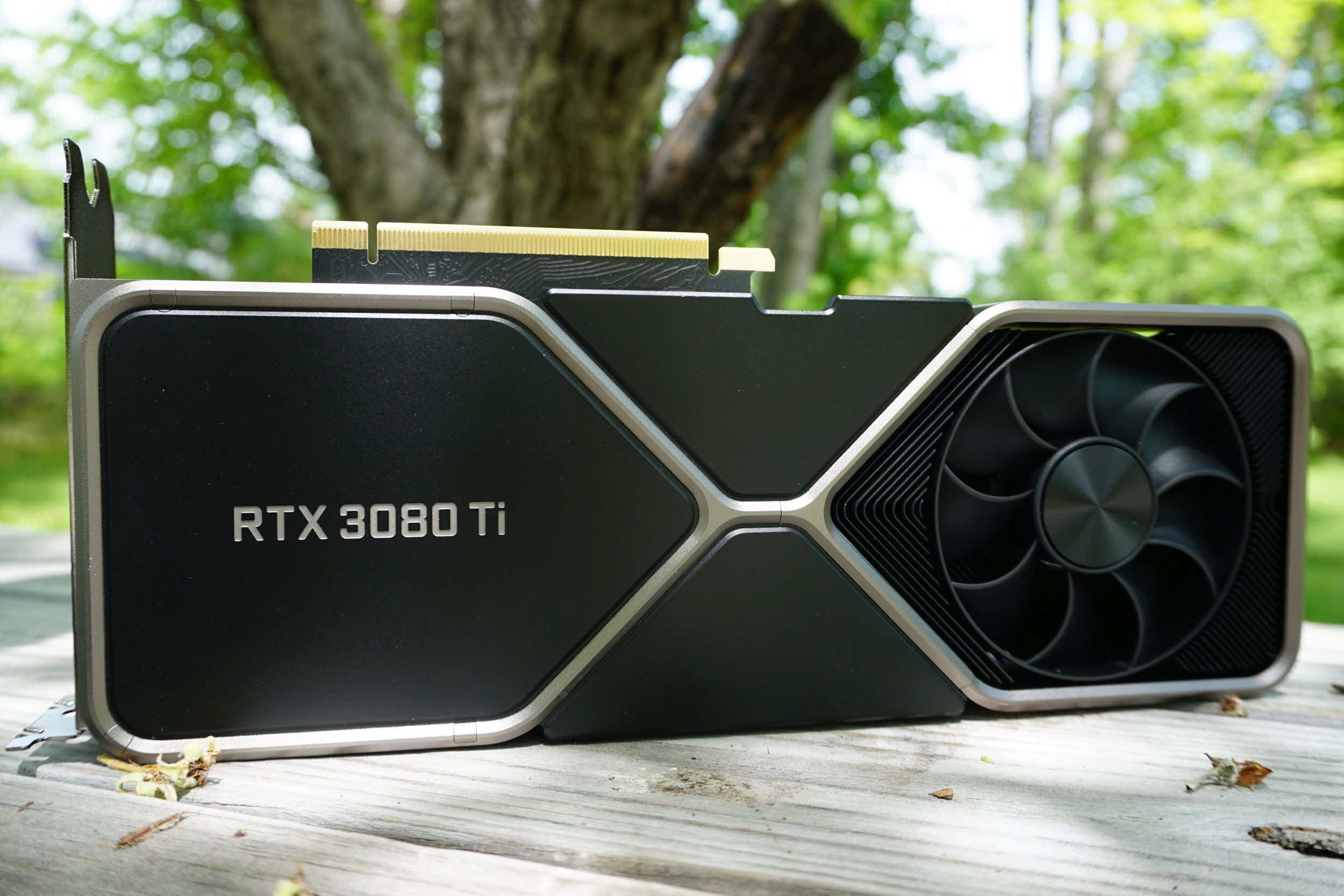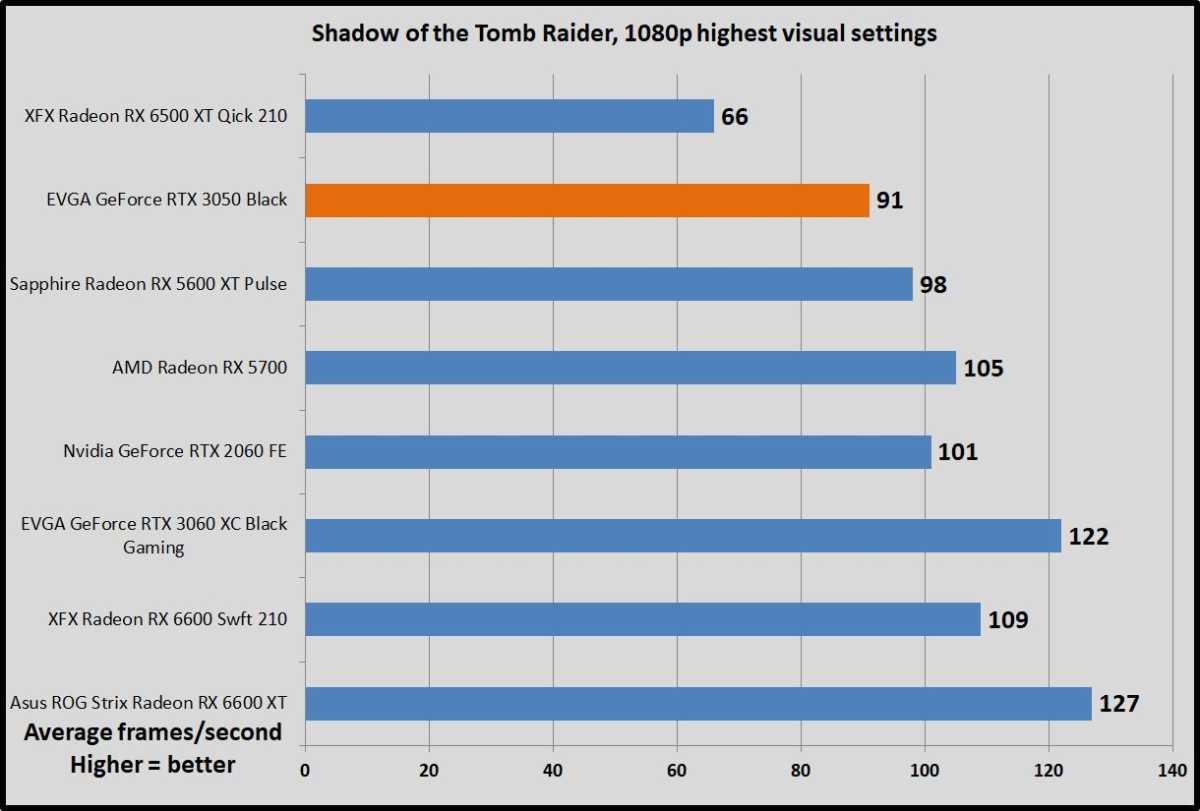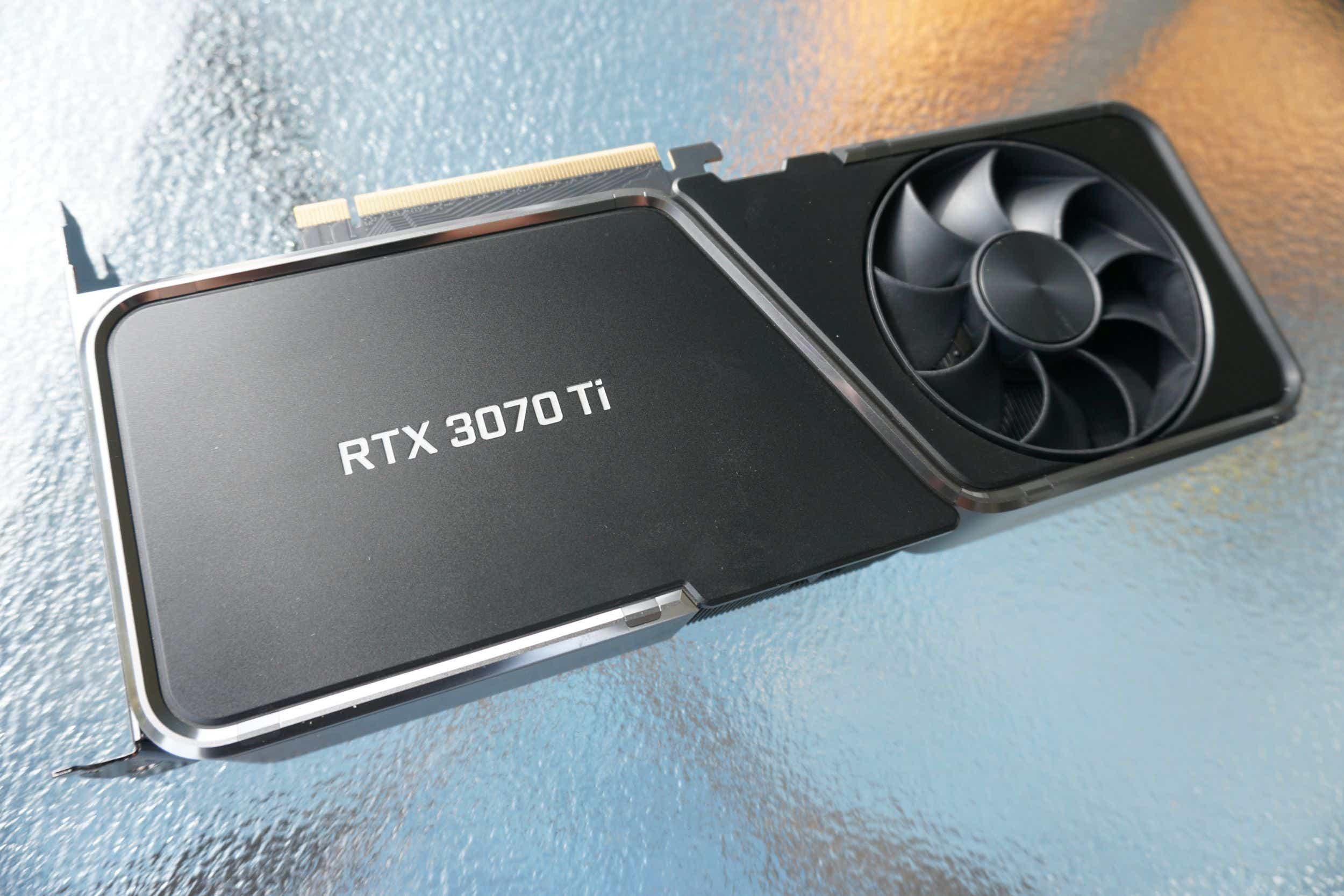
 Image: Thiago Trevisan/IDG
Image: Thiago Trevisan/IDG
FOMO, or the “fear of missing out,” is a real thing for GPUs. Have you ever fired up your favorite game, and wondered how much better it could look—or how much smoother it could be—if you could just get your hands on an ultra-powerful GPU? With recent shortages and skyrocketing prices, the million-dollar question is: Do you really need that hyper-expensive GPU? Can you get most of the features and performance out of a much cheaper option? Let’s find out where the diminishing returns start to happen, and what the best value for your performance dollar is! (For further guidance, see our comprehensive rundown of the best graphics cards for gaming at all price points.)
What’s your monitor resolution?
Let’s narrow down your individual needs and use case. First, monitor resolution is a vital factor in determining how much GPU you need. Let’s break it down. Our first goal is to establish great frame rates at each level. (We’ll talk about supporting technologies and advantages of certain GPUs next, too.)

Brad Chacos/IDG
Brad Chacos/IDG
Brad Chacos/IDG
1080p, 60Hz refresh, averaging medium to high settings:
Recommendation: Almost any modern GPU will do—including the AMD RX 6500 XT budget offering.
1080p, 144Hz refresh and beyond, high to ultra settings:
Recommendation: To hit these metrics, you’ll likely need to step up to a minimum of a GeForce RTX 3050 or AMD 6600 XT on the lower end, or an RTX 3070 level GPU or the RX 6800 for really smooth performance at higher visual settings. New 360Hz 1080p monitors may even require insane GPUs such as an RTX 3080 or 3090 to really max out—so the sky’s the limit here.
mentioned in this article
GeForce RTX 3050
 Read our reviewPrice When Reviewed:$250Best Prices Today:$250 at EVGA | $279.98 at Amazon | $330 at Newegg
Read our reviewPrice When Reviewed:$250Best Prices Today:$250 at EVGA | $279.98 at Amazon | $330 at Newegg
1440p, 144Hz refresh, high to ultra settings:
Recommendation: You’ll likely want to start at least on the level of an RTX 3060 here, or AMD 6700 XT, if you want to take advantage of what your monitor can offer. Older GPUs such as the RTX 2070 and above can certainly still perform great, too.
Ultrawide monitors, 100Hz+refresh and high to ultra settings:
Recommendation: We didn’t forget you ultrawide monitor users—it’s often the sweet spot between 1440p and 4K. You’ll want to follow the same rules typically for 1440p gaming for a good gaming experience, and possibly step up to higher-tier GPUs for even better results.
mentioned in this article
Radeon RX 6800

 Read our reviewPrice When Reviewed:$580Best Prices Today:$580 at Best Buy
Read our reviewPrice When Reviewed:$580Best Prices Today:$580 at Best Buy
4K, 144Hz refresh, high to ultra settings
Recommendation: The holy grail of PC Gaming—well, until 8K steps in. To have a good gaming experience, you’ll want to start around the RTX 3070 or 2080 Ti level, or AMD RX 6800/6800 XT. If you really want to be impressed—this will call for the RTX 3090 or AMD RX 6900 XT for maximum performance and visuals.

Thiago Trevisan/IDG
Thiago Trevisan/IDG
Thiago Trevisan/IDG
What you’re missing out on
For good frame rates with most monitors, you really don’t need the top-spec GPUs. But their higher prices must mean you’re missing out on something, right? Kind of.
Ray tracing: Sure, an RX 6500 XT technically can do ray tracing, but you won’t want to suffer through it. A more expensive GPU will simply give you more eye candy—that’s when we go beyond simple frame rate expectations. Thankfully, coupled with technologies such as Nvidia’s DLSS and AMD’s FSR, more reasonable GPUs such as the RTX 3060 or 3070 can do a pretty good job in most games. Of course, if you want to step it up to 4K and ultra, that’s really when you’ll need an RTX 3080 Ti level beast to handle it.
mentioned in this article
GeForce RTX 3080 Ti Founders Edition
 Read our reviewPrice When Reviewed:$1200Best Prices Today:$1200 at Best Buy
Read our reviewPrice When Reviewed:$1200Best Prices Today:$1200 at Best Buy
Some people don’t care for ray tracing, so they can save some big bucks. It’s a big technology that will be here going forward, however, so expect it to become better and easier to run with time.
E-sports players: Competitive e-sport titles often have a need for low latency, high refresh-rate gaming. With a lower-spec GPU, you’ll be falling short of a high refresh-rate monitor’s performance unless you set those settings way down. Some games are fine running at 60 frames per second, such as casual open-world adventures—but if you’re into e-sports, this is where newer GPUs start to matter.Content creators: If you’re a content creator and gamer/streamer, some low-end GPUs may leave you disappointed. For example, the RX 6500 XT doesn’t include typical video decoders and encoders, so you’ll be out of luck. You’ll want to step up to at least 8GB of VRAM for most use cases.Future proofing: If you bought a GTX 1080 Ti years ago, you know how relevant this GPU still is. How about a 3GB GTX 1060? Not so much. A more expensive GPU now does buy you several years versus a much cheaper option. A limited RX 6500 XT won’t be very useful in two to three years, but you can bet that an RX 6800 XT will still be highly relevant for most gamers. This is a classic example of pay now, or pay later to upgrade earlier.
What you do get in most newer GPU tiers
Most newer GPUs will still give you the technologies available in their higher-tier brethren. Want Nvidia Nvenc, DLSS, reflex, or even ray tracing? Most will offer it, with the caveat for performance drops with things like ray tracing if you opt for a less powerful GPU.
AMD is a similar story—even the RX 6500 XT can take advantage of Smart Access Memory, FSR, and other niceties available across the newer line of GPUs.

Thiago Trevisan/IDG
Thiago Trevisan/IDG
Thiago Trevisan/IDG
How about older GPUs?
Not everyone is cross shopping an RTX 3060 with an RTX 3070 and wondering if it’s worth the upgrade. What are you missing out with 10- or 20-series GPUs? The 9 series, such as the 980 Ti, may still play some games, but they’re limited.
The same monitor and graphics settings rules will apply—if you keep it in check, you’re not missing much if you’re still gaming on a RTX 20-series GPU like a RTX 2060, or even a GTX 1080. You’ll have to lower settings and keep your monitor choice to lower resolutions than 4K.
What you are missing, however, likely will be the greater visual levels, as technologies such as ray tracing are either not supported or do not work very well on older GPUs.
You may be surprised to learn that some older GPUs—such as the GTX 1060 6GB and AMD RX 580—can still hang at 1080p with newer options like the 6500 XT, too.
Are there any bang-for-the-buck choices in this market?
Pulse Radeon RX 6600 XT
 Read our reviewPrice When Reviewed:$399Best Prices Today:$399 at Newegg
Read our reviewPrice When Reviewed:$399Best Prices Today:$399 at Newegg
Process of elimination: Let’s start with the polar opposites in the GPU market. The AMD RX 6500 XT is the budget newcomer to the market, with a supposed MSRP of $199 (heh, heh). It has limited monitor ports, 4GB of VRAM, and can’t handle much more than 1080p medium settings. You’ll likely want to avoid this one, but you may have to up your budget in today’s inflated market for a better offering.
Consider instead the RX 6600 or 6600 XT, or a RTX 3050 if you can find it at a reasonable price. You’ll get much better frame rates, and even some ray tracing, too.

Brad Chacos/IDG
Brad Chacos/IDG
Brad Chacos/IDG
Polar opposite number 2: The RTX 3090 or 6900 XT. You probably don’t need these. They’re expensive, and unless you need the 3090’s 24GB of VRAM, it’s vastly overkill. If you’re after high end gaming, the RTX 3080 10GB was always the sweet spot—but it’s so sold out that we can’t recommend it. The RTX 3080 Ti is a good alternative to the 3090, it’s a few hundred dollars cheaper for almost the same performance. (If you can stomach the high prices, most sell for beyond their $1199 MSRP.) The newly released 12GB version of the RTX 3080 may be a bit cheaper than the 3080 Ti, with similar performance, too.
On the AMD side, the 6800 XT is a competent alternative to the 6900 XT—only a bit less performance but you’ll save some big bucks.
Choosing between AMD or Nvidia? Nvidia is still the leader in ray tracing and has some specific technologies like Nvenc which may interest you, otherwise AMD is very competent—especially at 1080p and 1440p levels of gaming.
mentioned in this article
GeForce RTX 3070 Ti Founders Edition
 Read our reviewPrice When Reviewed:$599Best Prices Today:$599 at Nvidia
Read our reviewPrice When Reviewed:$599Best Prices Today:$599 at Nvidia
After the extreme ends, how about the middle? This is likely where most people will look for their GPU. The RTX 3070 is certainly a stand out here, followed by the slightly paired-down 3060 Ti. They’re much better performers than the RTX 3060, which although it has 12GB of VRAM, isn’t on the same level as the 3060 Ti with 8GB.
The RTX 3070 Ti or AMD RX 6700 XT, or RX 6800, are good performers, but they carry some pretty high pricing premiums relative to the performance increase they offer.
If choosing one bang-for-the-buck GPU, we’d likely have to settle on either an RTX 3060 Ti or 3070. They provide most of the perks of their higher-end siblings, and in the case of the 3060 Ti, can be found for cheaper than the others. (They’re still expensive, with average pricing easily surpassing $600 to $700 at retail)

Thiago Trevisan/IDG
Thiago Trevisan/IDG
Thiago Trevisan/IDG
Save some money!
The GPU market is currently brutal, with the price delta between cheaper GPU offerings and the top end being bigger than ever. The good news is that diminishing returns start to hit really hard after you pass an RTX 3070 level of performance for most people—allowing you to enjoy most of the benefits the higher end offers at often half the cost or less.
Author: Thiago Trevisan
Recent stories by Thiago Trevisan:
GeForce RTX 4070 vs. RTX 3080 vs. Radeon RX 6800 XT: Which to buy?MSI Z790 Edge WiFi DDR4: A motherboard with a silver liningMSI MEG X670E Ace: Top Gun performance for your Ryzen CPU




